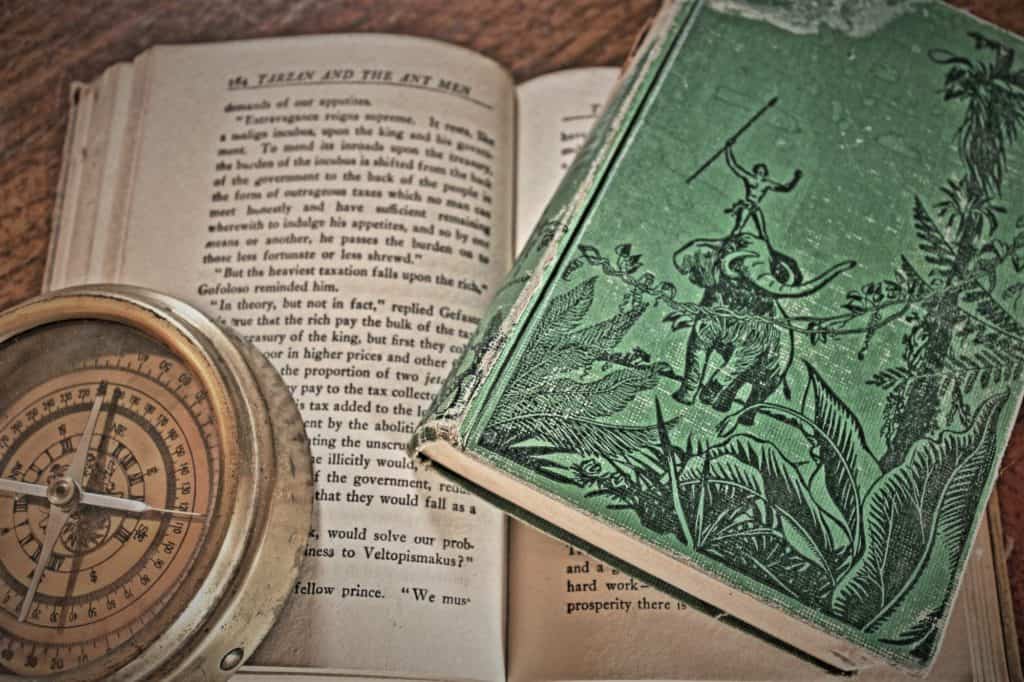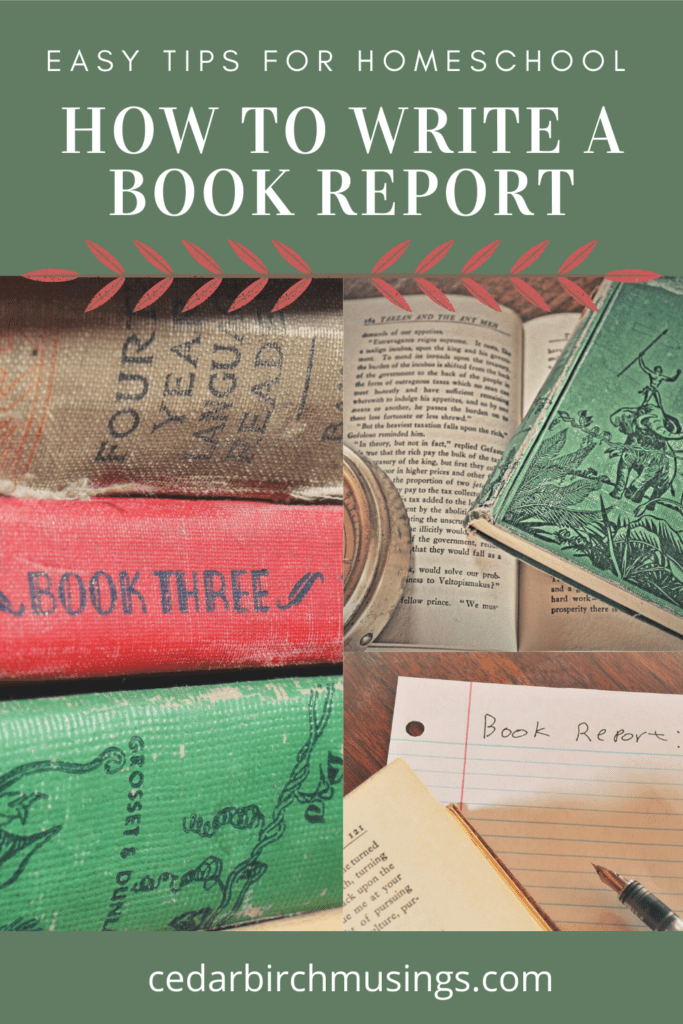Writing a book report can be a simple exercise for middle school through highschool homeschool. There are many formats and tips online such as this simple one from ThoughtCo. which will give you great ideas to work with for your family. Our list of great reads at the end of this article will make writing a report easy, these books are chock full of great scenes to write about.
In our family, we have hugely diverse personalities and learning styles and I quickly found out that using a tightly required format in sentence and paragraph style would make book report writing quite the chore and take the joy out of it. I can see the creative light putter out very quickly when it doesn’t need to.
We learned that by giving a few directions to focus the thoughts and aim, they were free to express their thoughts in their own style. For example, instead of dictating which characters or scenes to write about, they get to choose which ones. Some paragraphs will be shorter while others will be longer as they choose. If it seems overwhelming to them, I will just have them focus on one paragraph at a time and see how far they can get in that particular paragraph in a 15-20 minutes session. Not using a formed worksheet actually helped, we were free to use cool adventure looking scrapbooking paper as a backdrop.
Below is the loose structure we use for book reports in our home. A side note: one of my kiddos is dyslexic and his amazing creativity shines when we use a computer to type out the report from the beginning rough drafts all the way to the final paper. By eliminating the hard task of manually writing and spelling, he is able to focus on the content instead of stressing about the mechanics. If we want to add it to designed paper, just print out the report, trim, and glue to the background paper.
After their thoughts are put down on “paper” in a rough draft, we go over spell checking and grammar structure. Read it aloud to hear awkward sentences or missing parts. I explain what I am looking for in the “fancy” final paper when they hand it to me. What I look for in the final draft is listed at the end of the article.

Book Report Structure
This style is loosely based on the 5 paragraph structure. I give a word count goal but don’t worry them with it until we were fine tuning the rough drafts. In the beginning, we started with a goal of 250 words and moved up 50 words for each paper. The goal for a basic book report for us is over 500 – 800 words.
The 5 Paragraphs
- Introduction Paragraph
- 3 Key Point Paragraphs
- Concluding Paragraph
Paragraph #1: The Introduction
Open with a sentence that is similar to a movie trailer commercial. It can be an epic sentence or even a question that hooks the reader.
E.g. Through raging infernos and spewing lava, can Eric make it to save the lost children in time?
Follow that sentence with 2-3 more sentences that describe the main character (protagonist) and what their life was like at the beginning before the adventure starts. End this paragraph with a sentence that refers to what in the book changes the course of their life and begins the adventure.
Notes: The opening sentence can often be the hardest to get started. Just like an artist staring at a blank canvas. You may have to dive into the second sentence and leave the opener for after the writing juices start to flow. If we stall for epic openers, we sometimes listen to narrated movie commercials. You know the type: deep expressive male voice that ramps up in tone and excitement by the end of the movie trailer.
Paragraph #2: Characters
Spend 3-5 sentences describing some of the big characters in the book (good guys and bad guys). Make sure to include mention of why they are on the “good guy” team or the “bad guy” team. If there are no clear bad guys, is there a circumstance or object that keeps getting in the way of the main character? Are there any people who look like they change sides or are not what they seem? Make sure not to spoil what happens, though.
E.g. Along the way Eric will have to determine if the slick well- dressed man named John is all he seems to be. Is he there as an expert in tracking and wants to help or is he there as a spy?
Paragraph #3: Scenes
Describe one or two scenes that you really liked in the book or remember and then one scene that you didn’t like. The reader should know by how you describe the scene whether you liked it or didn’t without having to say “I liked it” or “I didn’t like it”.
E.g. Eric wrestled the wild cougar until his arms couldn’t hold on any longer. The intense scene kept me wanting to know what would happen next and I had a hard time going to sleep that night.
E.g. As Hank watched the parade of slaves march past, I had tears streaming down my eyes at the cruelty of it.
Paragraph #4: Strengths and Weaknesses
What does this book do well? Here are some ideas to think about to get you started:
- Does the book describe scenes really well and you felt you were really there in the story?
- Does the book have a really well developed plot line? Is it really good at twists and surprises?
- Does the book do a good job describing and developing the characters? Meaning, did you have a strong dislike for a character or were you rooting for a character? If a book does not develop a character well, you are not drawn in emotionally to the characters one way or the other.
Does this book have anything missing in your opinion? Does it lack something that keeps it from being a great book?
Paragraph #5: Conclusion- Did You Like It?
The conclusion seems to be the hardest paragraph as a whole. Here are a few ideas to finish up. Choose a different epic question unlike the introduction paragraph that asks what the main character or foe will do towards the middle or end of the story without giving away ending.
E.g. “Snakes, sand, and greedy thieves—can Indie make it out of the lairs and traps set for him?”
Then go on for 1 or 2 more sentences in praise or criticism of this book or finish your epic movie trailer style commercial of this book. The reader should know what you think of this book without having to say “I like it” or “I didn’t like it”.
E.g. “With awesome epic scenes and surprising twists, don’t miss out on this tale of heroes and villains.”
You can tell that I liked this book and that it was exciting to read.
If I didn’t like this book it may look something like this:
E.g. “ A forlorn story that makes it hard to get through and I missed what the story line was about. I would give this book a C grade and pass on it.”
You can tell that this book wasn’t my favorite story.

Grading the Report
Because a book report is subjective to the child and what they remember, liked, or disliked I look for these things in the paper structure:
- Is there misspelling or missing pieces of sentences?
- Are their paragraphs clear in their focus key topic with good descriptions?
- Did they convey their dislike or like without stating the fact?
- Do they have a clear introduction and conclusion paragraph?
- How does this paper rank compared with the student’s previous papers in effort or attitude in writing it?


